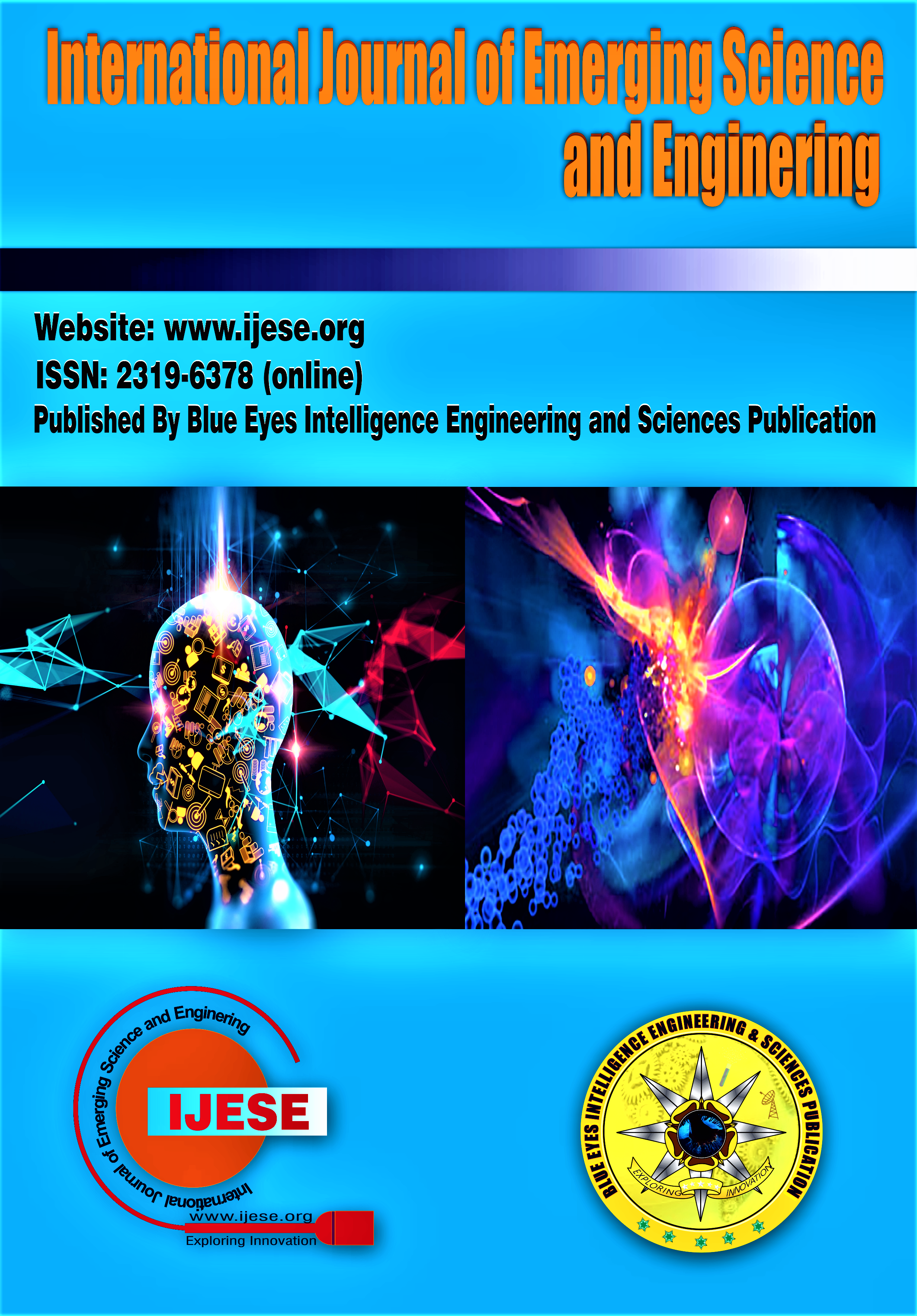Improvement of Performance and Efficiency Through the Use of Permanent Magnet Propelling Phenomenon in Traditional Vertical Axis Wind Turbine Systems
Main Article Content
Abstract
It is widely accepted that the energy we currently use will not be sufficient to fulfil the demands of all people on the globe in the future. As a result, cleaner and more abundant alternative energy sources—which may also take the form of hybrid energy—are needed. Renewable energy sources will certainly become more prominent. Modern civilizations needs cheap, plentiful energy to survive, therefore, it is crucial for human civilization to create a sustainable, affordable, and environmentally benign alternative sources of energy. The global energy dilemma may have an efficient solution in the form of wind power. In current state of affairs, the air could seems like insignificant to any or all. However we tend to all grasp that, the planet has shaped up with associate uneven surface, which suggest that the sunrays could strike these surface with variable intensities at numerous spot on its uneven surface. This creates associated degree of unequal degree of heating of the earth surface, that which causes variation in part of atmospheric pressure thereon. Then it leads to wind. The Kinetic energy of these air molecules is nothing but wind energy. A mechanical mechanism known as a wind turbine which transforms, kinetic energy which is there in the air around it into the required form of mechanical energy. Here in this research we focused on the repellent qualities of permanently magnetized objects with similar poles. These innate qualities of magnetic propulsion are used here as an energy sources. Due to the inclusion of this components like magnetic repulsion, our VAWT system will operate more effectively even at lower wind speeds circumstance also. This magnets will produce a repulsive force that will add various sorts of kinetic energies to the wind turbines as they convert wind energy's kinetic energy of into the necessary mechanical power when it’s employed as an extra source of energy in a VAWT.
Downloads
Article Details
Section

This work is licensed under a Creative Commons Attribution-NonCommercial-NoDerivatives 4.0 International License.
How to Cite
References
Sevvel P, Santhosh P (March 2014 )“Innovative Multi Directional Wind Turbine”International Journal of Innovative Research in Science, Engineering and Technology Volume 3, Special Issue 3, page no 1237 to 1240
Castillo, Javier (December 2011) “Small-Scale Vertical Axis Wind Turbine Design” Bachelor’s Thesis Tampere University of Applied Sciences
N.Vaughn (2009), “Renewable Energy & the Environment “, CRC Press, Ed. pp 63 -101
Gary L. Johnson (October 10, 2006) “Wind Energy Systems”, Electronic Edition Manhattan, pp. 61-70-15
Er. Girt, K. M. Krishnan, G. Thomas, E. Girt, Z. Altounian, (2001) “Coercivity limits and mechanism in nanocomposite Nd-Fe-B alloys”, Journal of Magnetism and Magnetic Materials, 219 – 230 https://doi.org/10.1016/S0304-8853(01)00031-2
Robert W Whittlesey1, Sebastian Liska1 and John O Dabiri (Fe 11, 2010) “Fish schooling as a basis for vertical axis wind turbine farm design”California Institute of Technology, Pasadena CA 91125, USA Page 1-10
J. P. Hennessey, Jr., (Feb 1997) “Some aspects of wind power statistics, and performance analysis of a 6MWwind turbine-generator”. J. Appl. Meteorol., vol. 16, no. 2, pp. 119–28, https://doi.org/10.1175/1520-0450(1977)016<0119:SAOWPS>2.0.CO;2
A.D. Wright and L.J. Fingersh (2008), “Advanced Control Design for Wind Turbines: Part I, Design, Implementation, and Initial Tests. NREL /TP-500-42437, Golden, CO, National Renewable Energy Laboratory https://doi.org/10.2172/927269
Brahamne, P., Chawla, Assoc. Prof. M. P. S., & Verma, Dr. H. K. (2023). Optimal Sizing of Hybrid Renewable Energy System using Manta Ray Foraging Technique. In International Journal of Emerging Science and Engineering (Vol. 11, Issue 3, pp. 8–16). https://doi.org/10.35940/ijese.c2545.0211323
Vendoti, S., Muralidhar, Dr. M., & Kiranmayi, Dr. R. (2019). Performance Analysis of Hybrid Power System Along With Conventional Energy Sources for Sustainable Development in Rural Areas. In International Journal of Recent Technology and Engineering (IJRTE) (Vol. 8, Issue 3, pp. 5971–5977). https://doi.org/10.35940/ijrte.f2567.098319
Bugade, V. S., & Katti, P. K. (2019). Assessment of Hybrid Energy Sources. In International Journal of Innovative Technology and Exploring Engineering (Vol. 9, Issue 2, pp. 4715–4720). https://doi.org/10.35940/ijitee.h6763.129219
S, B. V., & Prabha, D. M. M. S. R. (2020). Control Strategies of Power and Power Factor using PID Controller in Hybrid Energy System. In International Journal of Engineering and Advanced Technology (Vol. 9, Issue 3, pp. 2312–2316). https://doi.org/10.35940/ijeat.c5658.029320
Surage, S., & Chawla, M. P. S. (2022). Hybrid Renewable Energy Generation Through Incremental Conductance Mppt. In Indian Journal of VLSI Design (Vol. 2, Issue 1, pp. 1–4). https://doi.org/10.54105/ijvlsid.c1204.031322





